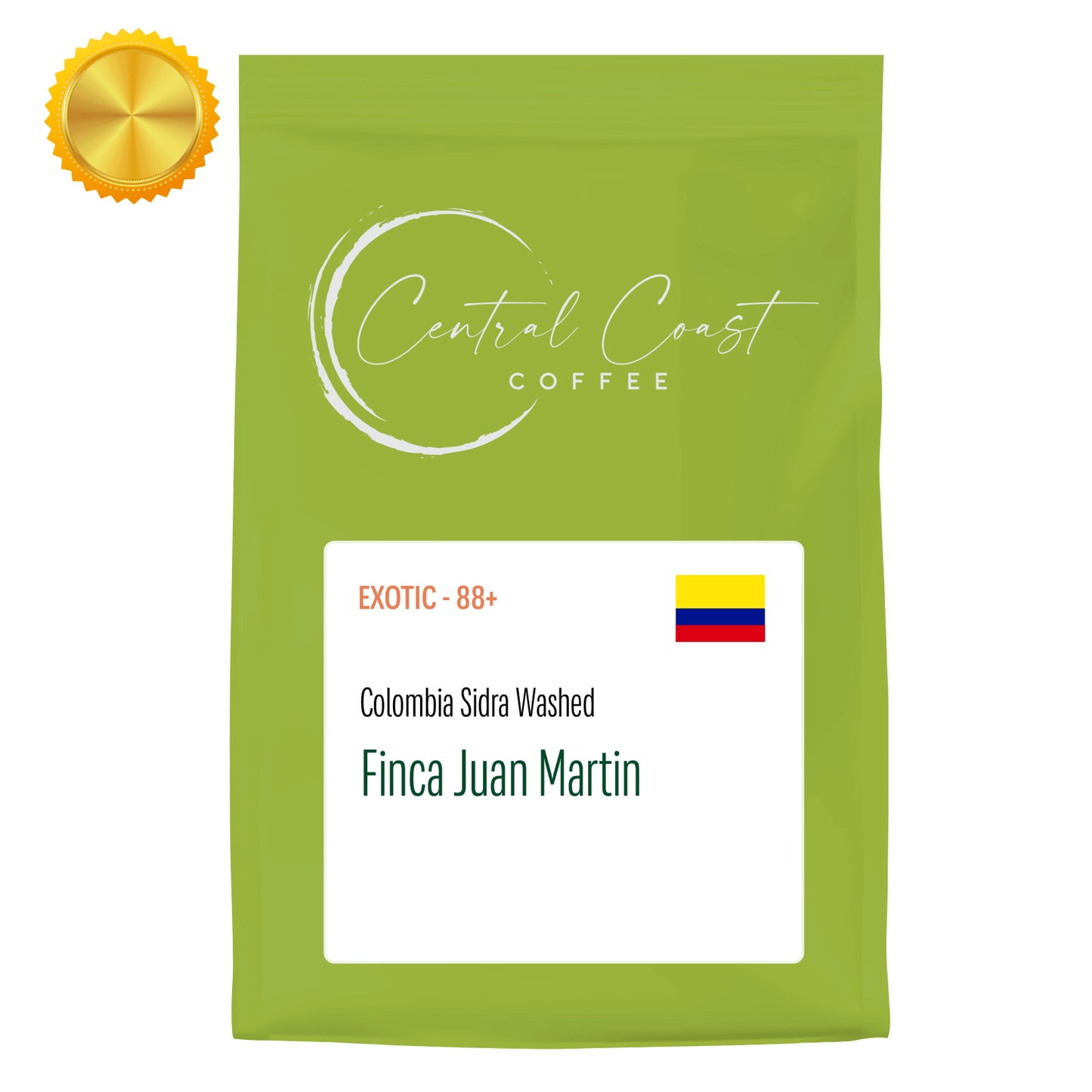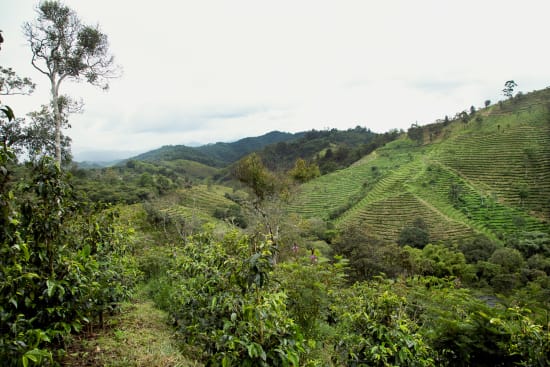





?
?
?
?
?
?
?
?
?
?
?
?
About Finca Juan Martin
Finca Juan Martin is an innovative and experimental farm owned and operated by Banexport. The goal and focus of this project are to cultivate, harvest, and process different varieties in order to develop appropriate practices for each step toward optimum coffee quality. Beyond this, Juan Martin serves as a resource and example for coffee producers that sell and export their coffees through Banexport. Located in the highest area of Sotara, just 30 mins from Cauca's capital of Popayan, Juan Martin is dedicated to developing environmentally-conscious practices as well as providing jobs to community members with educational opportunities.
Various maintenance tasks are carried out at Juan Martín Farm: soil conservation is done because of the steep slope of the farm; undergrowth is allowed to grow to avoid erosion; evaluations are made on coffee crops to identify pests or diseases and eliminate them; the surface of the tree is cleaned every 75 days and coffee the space between rows is cleared with a scythe every 2 months.
In general, coffees here are cultivated, harvested, and processed while adhering to the highest standards of quality, organization, and control depending on the ambient conditions as well as the specific needs required by each variety as determined by various factors including Brix level, moisture content, and desired cup characteristics.
About Sidra Varietal
Sidra is a cross-breed native to Ecuador that is reportedly either/both derivative of Bourbon and Typica of/and a hybrid developed by Nestlé.
Coffee in Colombia
Coffee holds a rich and storied place in Colombia’s cultural and economic history. Colombia’s coffee-growing regions, characterized by fertile volcanic soils, high altitudes, and ideal climates, provide perfect conditions for cultivating Arabica beans, which thrive in these unique environments. This terroir contributes to the bright acidity, balanced body, and nuanced flavors typical of Colombian coffee, often with notes of citrus, tropical fruit, and chocolate. The coffee industry in Colombia has long been rooted in small-scale farming, with generations of families dedicating themselves to the craft of growing, harvesting, and processing coffee. This emphasis on tradition and quality has helped establish Colombia as one of the most respected coffee producers in the world.
In recent years, Colombian coffee has experienced a revival, thanks in part to the growing specialty coffee market. Producers, inspired by changing consumer demands, have explored new and experimental approaches to processing, such as natural, honey, and anaerobic fermentation methods, to diversify flavor profiles and showcase the country’s potential. With a focus on high-quality, traceable, and ethically sourced beans, Colombian coffee producers have embraced exotic varietals like Gesha and innovative cultivation practices, elevating the profile of Colombian coffee on the global stage. This movement has not only revitalized Colombia’s coffee industry but also encouraged sustainable practices and fair trade, providing more economic opportunities for smallholder farmers and drawing coffee enthusiasts from around the world.
SKU: juan_martin_160g
Package Weight: 200g
How does my coffee come packaged?
Despite some of our product images looking very fancy our coffee is packaged into a plain brown paper foiled lined bag with a Swiss WIPF degassing valve. This offers superior oxygen and moisture protection. We recommend once you crack the seal you store your coffee in AirScape containers or Weber Workshop Bean Cellars for a single dosing option.
You can also freeze/vacuum seal in small lots, then use straight away once removed from freezer.
We don't have fancy printed bags with ziplocks (more plastic), we save that cost and buy better quality green beans so you can focus on your cup quality instead of fancy marketing and artwork.






